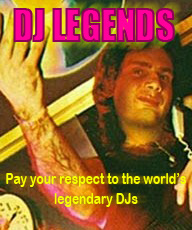My First mod!
My First mod! Posted on: 23.02.2009 by Minh Boey I haven't been on this site long but i already have the inspiration to do my own project so today i went to maplin my local electronics store and went and bought this project box, cables and illuminated push on and off buttons...I am going to buy a usb game controller me believes and re-wire it up to the buttons i have bought! I am going to buy more buttons but they only had these left in the store so im ordering the rest online! Not really sure exactly how im going to make the buttons light up when they're supposed to but hey its all a bit of a learning curve for me so who knows! The buttons have 4 points on them. @ marked + & - which is standard so somehow i gotto figure what to do with the rest. I anyone has any ideas then let me know haha... back of the button: excuse my poor soldering lol! Was gonna do something similar to this : http://djranking s.com/community /showthread.php?t=2492 only with illuminated buttons instead of buttons and leds! I know its basic but this is my first try! I'm only ever gonna use this as a show off piece for ableton so its not gonna be spot on. I just wanted to get to know hows it done first and then maybe move onto something abit more elaborate hehe! What do you guys believe? Any tips? | |
| DJ Pablo 25.02.2009 |
Originally Posted by jonno212
an example; In the picture you see a square ( under, leftside with bleu and yellow wires), there was a switch.to the right you see 2 wires that control a led. All 4 wires now are going to a illuminated switch. If there's a led in it make sure you connect the right wire to the Kathode and anode of the led otherwise the led will not function. |
| Nick Ross 25.02.2009 |
Originally Posted by Fatlimey
|
| Minh Boey 25.02.2009 |
Originally Posted by Anthony More
and if that is the case where/what on the controller has the functionality to be wired back up to the LED switch to tell it to go on and off? or am i just being stupid? I haven't got my controller yet so i only pose the question because i havent yet seen it! Im guessing that i will be able to program one of the free buttons that i dont use to sent an on or off message to the light? But surely i won't have enough buttons? Hmmm This is going to require some investigating! Has anyone ever used illuminating push switches before? If so any tips? |
| Minh Boey 23.02.2009 | I haven't been on this site long but i already have the inspiration to do my own project so today i went to maplin my local electronics store and went and bought this project box, cables and illuminated push on and off buttons... I am going to buy a usb game controller me believes and re-wire it up to the buttons i have bought! I am going to buy more buttons but they only had these left in the store so im ordering the rest online! Not really sure exactly how im going to make the buttons light up when they're supposed to but hey its all a bit of a learning curve for me so who knows! The buttons have 4 points on them. @ marked + & - which is standard so somehow i gotto figure what to do with the rest. I anyone has any ideas then let me know haha... back of the button: excuse my poor soldering lol! Was gonna do something similar to this : http://djranking s.com/community /showthread.php?t=2492 only with illuminated buttons instead of buttons and leds! I know its basic but this is my first try! I'm only ever gonna use this as a show off piece for ableton so its not gonna be spot on. I just wanted to get to know hows it done first and then maybe move onto something abit more elaborate hehe! What do you guys believe? Any tips? |
| MadMan Ajms 25.02.2009 | I'd love to change the pitch faders one day, only if it was semi easy and faders were really smooth like they are on the 300. |
| DJ Pablo 25.02.2009 |
Originally Posted by jonno212
an example; In the picture you see a square ( under, leftside with bleu and yellow wires), there was a switch.to the right you see 2 wires that control a led. All 4 wires now are going to a illuminated switch. If there's a led in it make sure you connect the right wire to the Kathode and anode of the led otherwise the led will not function. |
| Nick Ross 25.02.2009 |
Originally Posted by Fatlimey
|
| Minh Boey 25.02.2009 |
Originally Posted by Anthony More
and if that is the case where/what on the controller has the functionality to be wired back up to the LED switch to tell it to go on and off? or am i just being stupid? I haven't got my controller yet so i only pose the question because i havent yet seen it! Im guessing that i will be able to program one of the free buttons that i dont use to sent an on or off message to the light? But surely i won't have enough buttons? Hmmm This is going to require some investigating! Has anyone ever used illuminating push switches before? If so any tips? |
| robert chanda 24.02.2009 | Sure, why not. I'll see what I can cobble together. |
| 24.02.2009 | Great Tip Fatlimey! We need to buy some of that here in the ranking s workshop! What do you believe about writing a basic soldering tutorial for beginners? That could be a big help for people. |
| robert chanda 24.02.2009 | Soldering tip: If you have to connect lots of stripped wire ends to stuff and you don't have the necessary three hands, flux is your friend.
So, go get yourself rosin some flux. Solder with a flux core is great if you can position the iron on the component and tap the flux against the newly heated contact - the flux embedded in the solder does the job of breaking the surface tension. If you find that you don't have enough hands to work like this then coating the receiving part with a tiny bit of flux does the same job but doesn't require you to melt the solder at the joint itself. Oh, and don't bother with ROHS lead free "silver" solder for hobbiest projects. It melts too hot and is a royal PITA to use. Normal Tin/Lead solder will make soldering a lot easier, melts cooler (protecting your components) and generally causes a lot less burned boards, melted plastic and swearing at things. Hope that helps someone. |
| DJ Pablo 24.02.2009 | How it works; If you push the button you make contact to your device. the device (that is programmed) recognizes the signal and sends a signal to your led to go on or off. It is not the hardware part of the button itself that make the led go on/off. |
| Xavier Emanuels 24.02.2009 | 2 of the conecters are for the button on and off and the other two connectors would be for the LED control. Just believe of it as an led control and button serpate from one another. |
| Minh Boey 24.02.2009 | Right i'm having trouble figuring out the wiring! This is one of the buttons i am using: these are the specs: Rating 1.5A 250Vac LED 2.2Vdc 25mA Bezel size 18 x 18mm Button diameter 12.8mm Panel cut-out 15mm diameter Length behind bezel 18mm (excluding solder terminals) Solder terminals Silver plated Brass The reverse of the button there is 4 connections (as shown in my frist post) I have already wired up + and - to green and blue wires respectively! It states on the website that this button can be wired either way so that the light can be illuminated when the button is on or off... so im guessing that i will have to connect one of the "extra" connections (by extra i mean one of the other 2 connections that are not + or - that i have already soldered to wire) in line with either the + or - so that the light will be connected upon pressing! Would my assumption be correct or will i not be able to do this? And for an update today i bought myself a cheap usb game controller! Not sure if its going to do the job or not as its only a cheapy from japan and it doesn't appear on the controlmate compatibility website (coz i have a mac and that was the program i was going to use to reprogram it) but we'll see in due time i guess! |
| Xavier Emanuels 23.02.2009 | You gotta crawl before you can walk - nice work dude Keep up the good work and keep us up to date ! |
| DJ Pablo 23.02.2009 | Nice, keep posting pics! and don't lose your patience. All the info on how to do it is out there, it just has to come to you. I'll try to help if I can. |
<< Back to Reviews of DJ equipment Reply



